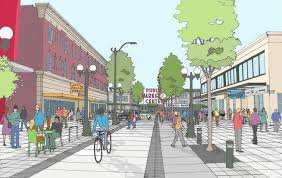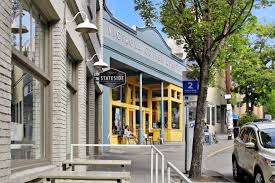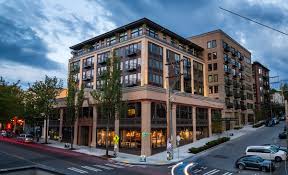Article 7 in a series on the Arlington, MA Master Planning process. Prepared by Barbara Thornton
Reminders of Arlington’s Revolutionary War history are scattered throughout the town. The town, first inhabited by the Algonquian group of Native Americans, then settled by European colonists in 1635 and incorporated in 1807, took its current name in 1867. Both formal memorials like the Uncle Sam statue and Cyrus Dallin’s “Menotomy Indian Hunter” statue as well as historic homes and manufacturing areas (Schwamb Mill) are part of the weave of history that gives the town identity. The history also includes objects, documents, designated landscapes and cemeteries.
Mill Brook, a Key Heritage Landscape
The heritage landscape of Mill Brook is lost in some places as the waterway passes through the town. But where it is visible, it is still a reminder of how manufacturing sites like Schwamb Mill used the waterway to move the town into the industrial era. The Massachusetts Department of Conservation and Recreation (DCR) completed Heritage Landscape Studies in 2006. DCR identified 63 heritage landscapes in the community and identified Mill Brook as a priority landscape. Other priorities included: Battle Road Corridor; the Butterfield-Whittemore house; the Mugar property, Spy Pond and the W.C. Taylor House. Deciding whether and how to preserve vistas of the historically significant Mill Brook will be one of the tasks of the Master Plan.
Identify and Preserve Historical Properties
Some of the challenges facing the plan involve 1) identifying the historically significant buildings, landscapes and artifacts; 2) determining whether to invest in preserving them for the future community; 3) finding the funding to acquire properties; 4) implementing effective maintenance operations to preserve them. Ownership ranges from private individuals, through Town, State and non-governmental organizations. For each form of ownership, there may be different procedures for preserving and maintaining the properties. Design guidelines for preservation and renovation are available. In areas designated as “historic districts” or in historic buildings guidelines have more power of enforcement than in places not so designated.
In addition to funding, guidelines and regulatory authorizes, Arlington has several local and regional organizations that provide information and support for historic preservation. These include: Arlington Historical Commission (AHC), Arlington Historic District Commission (AHDC), Arlington Preservation Fund, Inc., Arlington Public Library, Arlington Historical Society, Cyrus Dallin Art Museum, Old Schwamb Mill Preservation Trust, Inc. and Freedom’s Way Heritage Association (FWHA).
Master Plan Offers Tools to Help
The Master Plan can better integrate the identification and preservation of historic assets into the ongoing planning process of Town government.
- Guide the development of a historic and archaeological resources inventory.
- Seek Certified Local Government (CLG) status for the Arlington Historical Commission.
- Expand community wide preservation advocacy and education
- Amend the Zoning Bylaw to incorporate historic preservation into the development review process.
- Adopt flexible zoning to encourage preservation.
- Provide support to Historic Districts.
- Maintain and preserve Town owned historic resources.
On November 4, 2014 the Town voted to adopt the Community Preservation Act (CPA) which could set aside Arlington funds for the use of historic preservation projects.
Much to Preserve, Obvious and Subtle
The town values Spy Pond for its beautiful vistas but also for the history of shipping ice from Spy Pond to chill food for hundreds of miles distant. The Jason Russell house is a well-known historic building, but the farm housing, mill housing, and Lustron homes along route 2 are more subtle reminders of the town’s long history. The Jarvis House and Mt. Gilboa have historic significance. But are they significant enough to warrant continued preservation, investment, maintenance and oversight by the Town government?
Making Choices with Limited Resources
If funds and manpower are limited, does the town set a priority on the most useable properties? The oldest properties? The easiest to preserve properties?
If resources are limited, is it enough to just identify and list all properties? What should be publicly owned? Privately owned but subject to historic preservation guidelines?
Many of the historic properties are now Town owned. The “Civic Block” in Arlington Center contains the Town Hall, the Robbins Library, the Whittemore Robbins House (including cottage and carriage house), a garden that holds the Dallin sculpture and an historic cemetery, the Central School (know housing the Arlington Senior Center) and the Maple St. house. This town center compound contains both the center of town government today and the buildings preserved from prior eras. The space is much used. What, if any, additional investments should go toward maintaining, preserving and reusing the space and facilities in the Civic Block for the use of the community?
Citizens Voices Heard Now
These and many other choices are on the table now for the citizens of Arlington. The DRAFT Master Plan is available for review and comment . Comment period closes December 1, about a week away. The development of the Master Plan represents an historic opportunity for the community to reflect on its history and develop the tools to move into the future.
There will be a public hearing on the DRAFT Master Plan on January 12, 2015 at the Arlington Town Hall.




